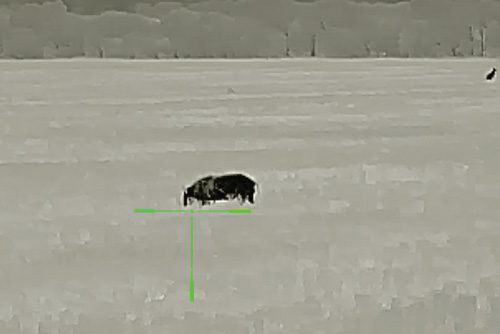Over the course of the past five or six years, I’ve spent more of my very limited leisure time enjoying hunting pursuits rather than fishing. scope
Possibly as fishing no longer provided the challenge required to hold my attention or perhaps because I saw that I could deliver a beneficial service to farmers through pest animal management.
Either way, as I did during my hard-core sportfishing years, I strive to keep in touch with cutting-edge methods and equipment for hunting.
Because most of the introduced feral animals I chase are nocturnal, the greater majority of time spent in the field is after sunset.
Instead of the time-honoured spotlight for night hunting, I use the equipment on the bleeding edge of technology.
For hunters this means one thing – thermal imaging.
Keeping up with tech sees me often running three or four thermal devices of differing makes and models.
My vehicle-mounted monocular – which has passed its fifth birthday – is from InfiRay and has given many hundreds of hours of flawless performance.
When that manufacturer released a new series of scopes, I keenly spent a few hours perusing models and the specifications of each.

One model had all the features on my wish list, so I raided the money box and ordered one from the first shipment to come into Australia.
That scope was their Geni Series GL35R and once in hand, it didn’t disappoint.
For those of you who speak ‘thermal’, the GL35R sports a 384×288 thermal sensor with 12-micron pixels.
At the front of the unit is a 35mm F1.0 lens, while the rear of the optic is equipped with a 1024×768 OLED display in the viewfinder.
The sensor is able to read the temperature difference of a mere 40mK – a millikelvin is one thousandth of a degree Celsius.
Photo and video recording with sound is stored in the onboard 32GB of storage.
One of the features I like on this unit is the manual recording function, which allows videos to be recorded without firing a shot.
Eight different reticle styles and four different colour palettes are selectable, though I find ‘Black-Hot’ to be the most user friendly on the eyes.
However, the main selling point for me was the GL35R’s in-built range finder.

Anyone familiar with thermal gear will be aware how difficult it is to judge distances to targets at night through a scope.
Having the range finder continually displayed on the screen of the scope takes all the guesswork out of the operation.
Whether hunting pigs or deer, it’s our habit to spot them from the vehicle, then close to shooting distance on foot.
Here is where this range finder pays dividends – ensuring we don’t start firing from too far a distant or stalk too close and flush the game away.
There is a photo with this article of a nice fallow stag harvested with the very first shot taken using the GL35R in the field.
A small bachelor mob was spied from the vehicle in a valley on the edge of a steep thickly timbered ridge.
Ranged at 260m distant, I knew I could comfortably walk much closer before considering a shot and stalked to within only 60m under the cover of darkness.
Without the range finder, I’d have gotten nervous and stopped much further away, purely through being unsure of the actual distance.
Since that trip, I’ve swapped the scope onto my .44 magnum lever rifle and put the outfit to use on foxes and some decent boars in the Southern Downs region.
When hunting feral pigs that are feeding in cultivated paddocks, we try to walk to within 30m or so before opening fire.
This allows several shots at fleeing mobs after the shooting starts and before they run out of range.
In that scenario, having the built-in range finder takes the guesswork out of judging when to stop stalking and start shooting.
Running time from the single 26650 rechargeable battery is very good, more than sufficient for our nocturnal sessions that always end after midnight.
Having used the Geni in the field for over four months now, I am yet to find fault with its construction or performance.
 Bush ‘n Beach Fishing Magazine Location reports & tips for fishing, boating, camping, kayaking, 4WDing in Queensland and Northern NSW
Bush ‘n Beach Fishing Magazine Location reports & tips for fishing, boating, camping, kayaking, 4WDing in Queensland and Northern NSW









